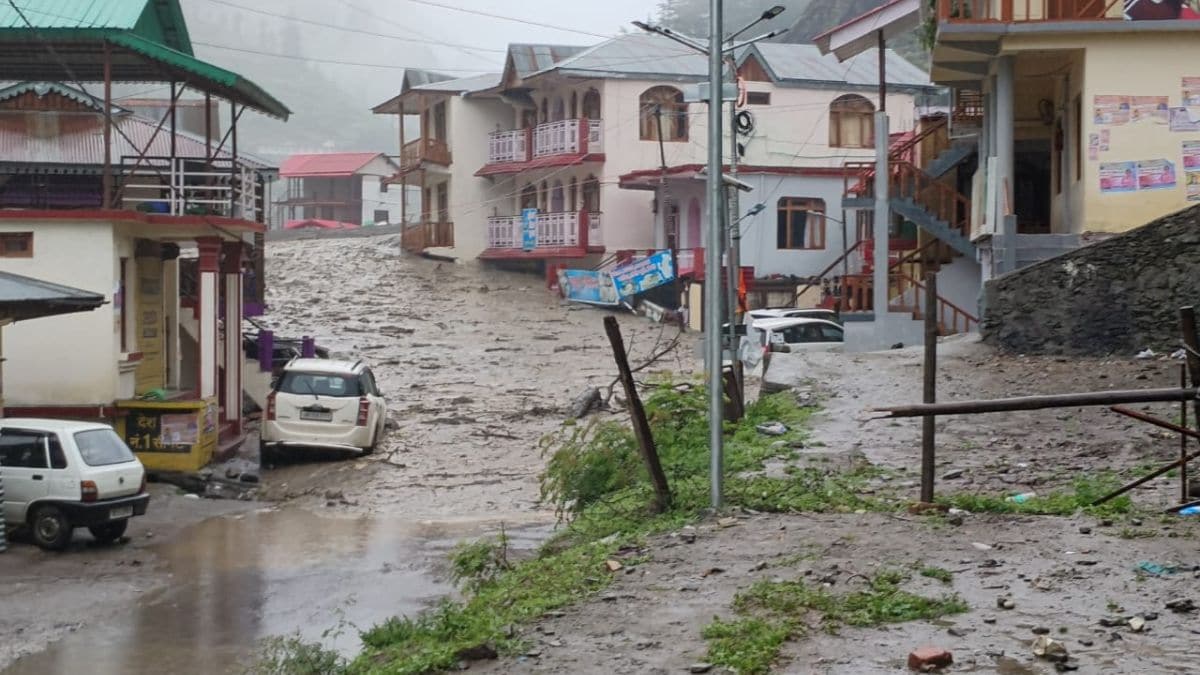

The devastating flash flood that struck Dharali village in Uttarakhand on August 5, 2025, was initially attributed to a cloudburst, but emerging evidence points to a more complex and catastrophic cause: a massive avalanche of glacial debris. Experts estimate that approximately 360 million cubic meters of glacial sedimentary deposits collapsed, triggering the deadly surge. This colossal volume of debris, equivalent to over 140,000 Olympic-sized swimming pools filled with mud, rocks, and glacial material, descended upon the village with terrifying speed, leaving residents with virtually no chance of escape.
Preliminary geological assessments suggest that the disaster was triggered by a retrogressive slope failure high in the mountains, leading to the collapse of unstable glacial deposits. These deposits, consisting of morainic and glacio-fluvial material, were situated in a hanging trough, an inherently unstable geological formation, approximately 7 kilometers upstream from Dharali at an elevation of 6,700 meters. The steep terrain and narrow, pre-incised channels of the Kheer Gad stream further accelerated the debris flow, amplifying its destructive power.
While heavy rainfall may have acted as a trigger, the underlying cause was the unstable nature of the glacial deposits. Geologist Imran Khan noted that the event was not a typical cloudburst but rather a massive detachment of unconsolidated glacial deposits. Data from the Indian Meteorological Department (IMD) supports this assessment, as rainfall recorded in the area was significantly below the levels typically associated with cloudbursts.
The sheer volume of the debris avalanche overwhelmed Dharali, flattening over 20 structures and resulting in multiple fatalities. Rescue operations have been hampered by damaged roads and adverse weather conditions, but authorities are deploying advanced equipment and personnel to search for those still missing. As of August 7, 2025, 70 people had been rescued, but over 50 remained missing.
Scientists are also considering the possibility of a glacial lake outburst flood (GLOF) or a glacier collapse as contributing factors. Satellite imagery has revealed the presence of glacial lakes upstream of Dharali, and a sudden release of water from these lakes could have exacerbated the debris flow. This scenario is similar to the 2021 Raini disaster in Chamoli, where a rock-ice avalanche triggered a catastrophic flood.
The disaster has raised concerns about unregulated construction and ecological threats in the Bhagirathi eco-sensitive zone, where Dharali is located. Experts believe that construction on river floodplains may have contributed to the severity of the disaster. Climate change is also a factor, as rising temperatures lead to accelerated glacier melting and increase the risk of such events in the Himalayas. The Uttarkashi tragedy underscores the need for careful monitoring of glacial environments, regulation of construction activities in ecologically sensitive zones, and proactive measures to mitigate the impacts of climate change in vulnerable mountain regions.